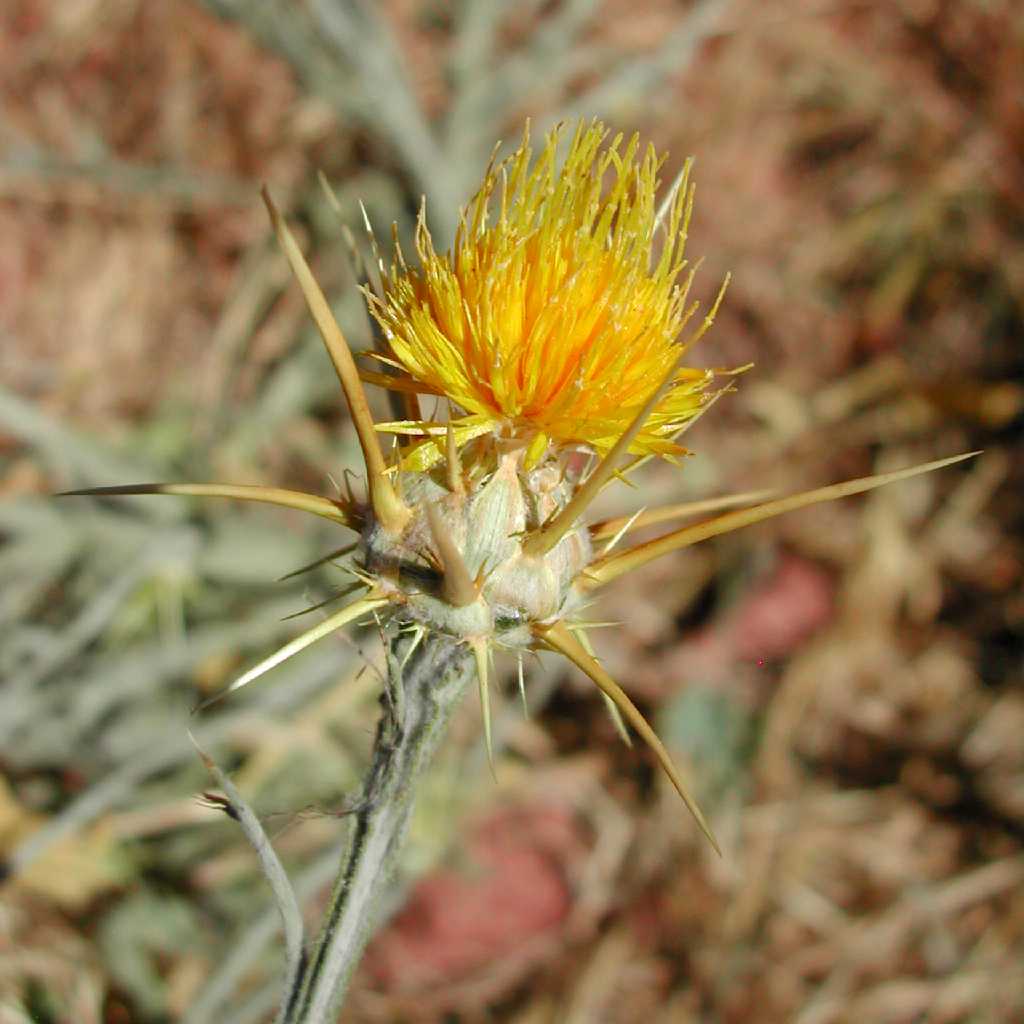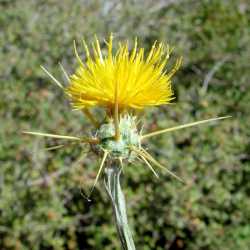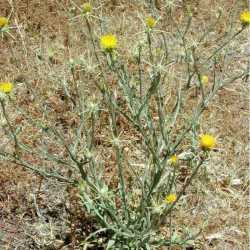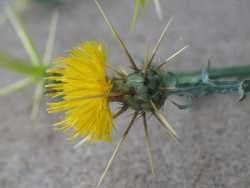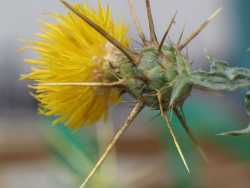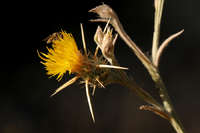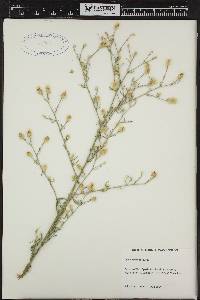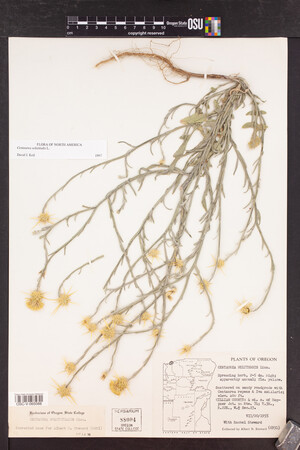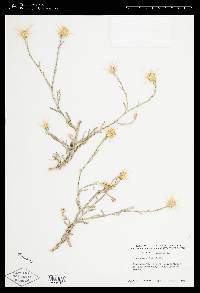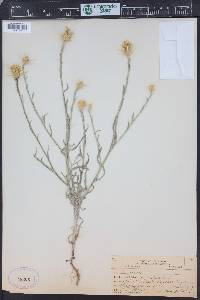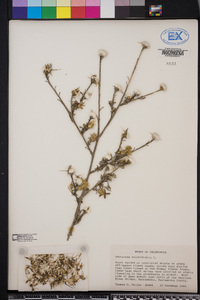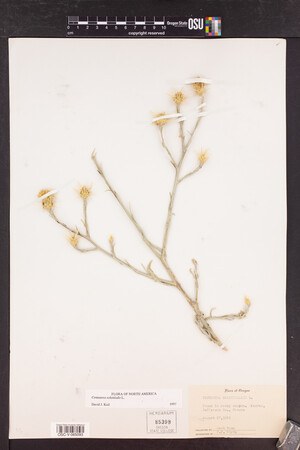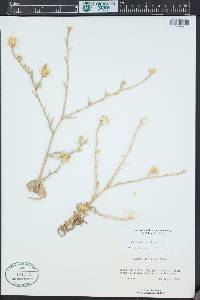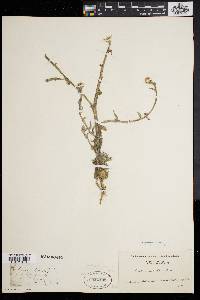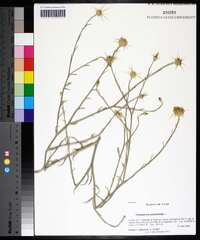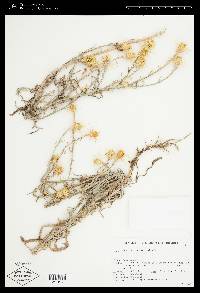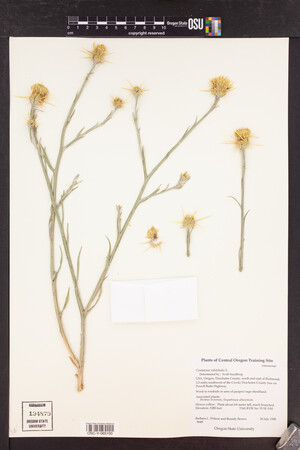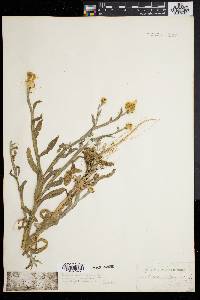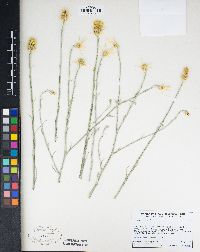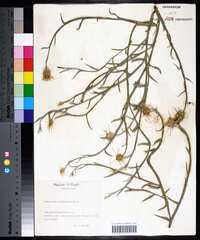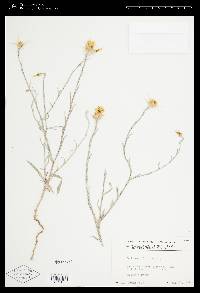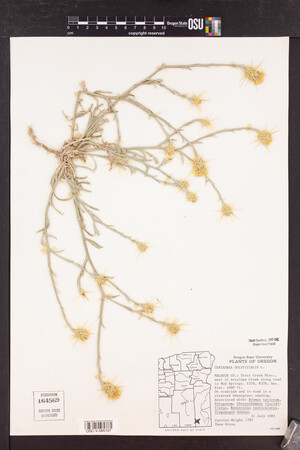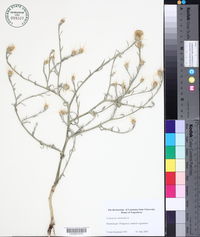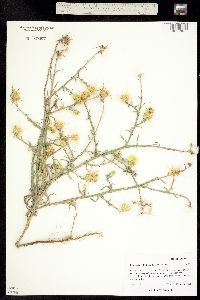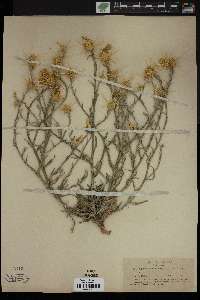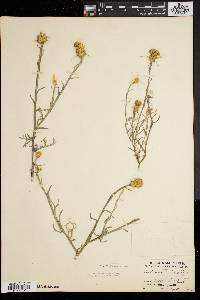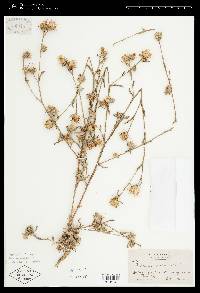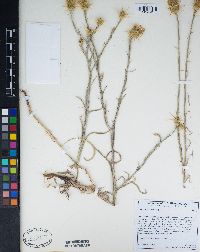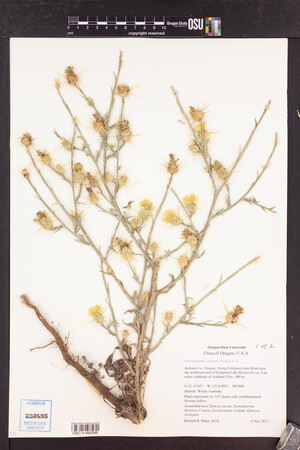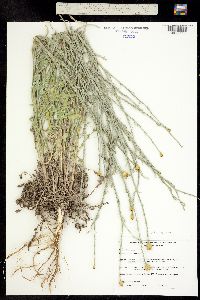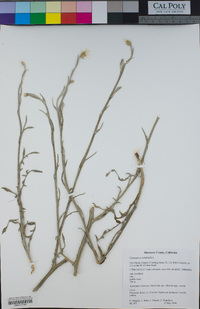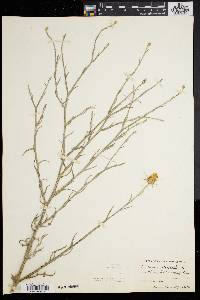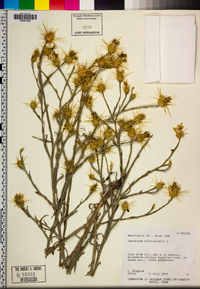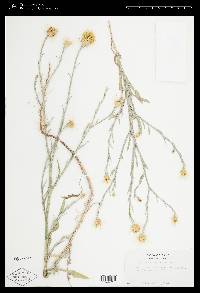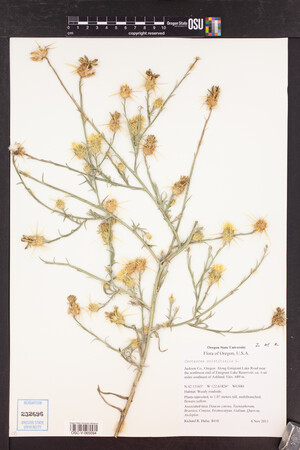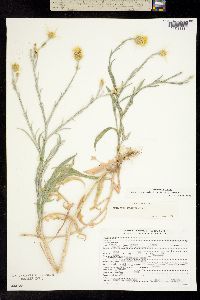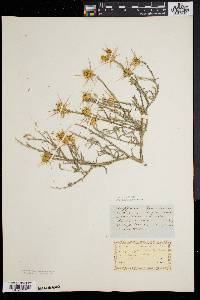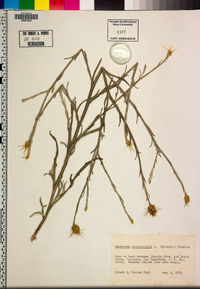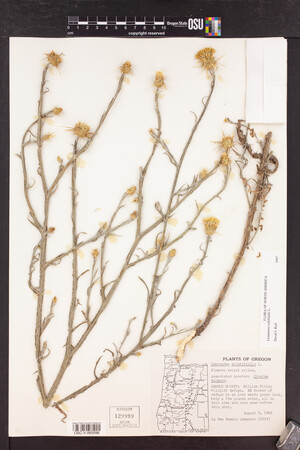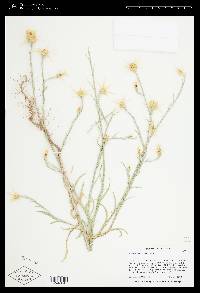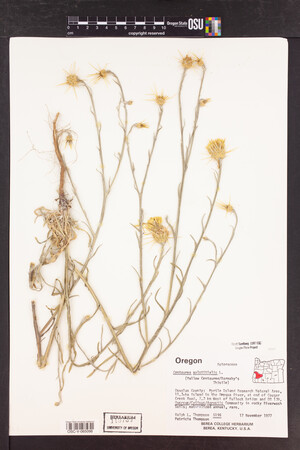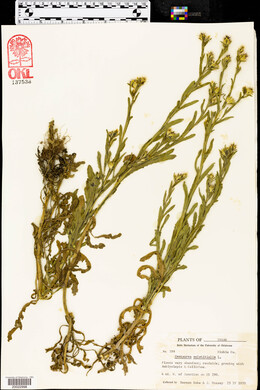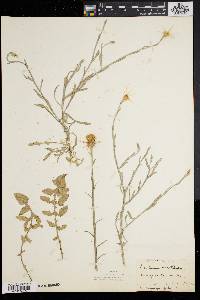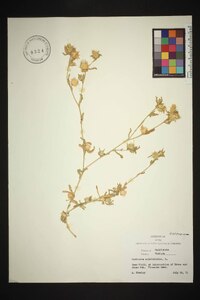Centaurea solstitialis
|
|
|
|
Family: Asteraceae
Yellow Star-Thistle
[Leucantha solstitialis (L.) A.& D. Löve] |
Annuals, 10-100 cm. Stems simple or often branched from base, forming rounded bushy plants, gray-tomentose. Leaves gray-tomentose and scabrous to short-bristly; basal and proximal cauline petiolate or tapered to base, usually absent at anthesis, blades 5-15 cm, margins pinnately lobed or dissected; cauline long-decurrent, blades linear to oblong, 1-10 cm, entire. Heads disciform, borne singly or in open leafy arrays, long-pedunculate. Involucres ovoid, 13-17 mm, loosely cobwebby-tomentose or becoming glabrous. Principal phyllaries: bodies pale green, ovate, appendages stramineous to brown, each with palmately radiating cluster of spines, and stout central spine 10-25 mm. Inner phyllaries: appendages scarious, obtuse or abruptly spine tipped. Florets many. corollas yellow, all ± equal, 13-20 mm; sterile florets slender, inconspicuous. Cypselae dimorphic, 2-3 mm, glabrous, outer dark brown, without pappi, inner white or light brown, mottled; pappi of many white, unequal bristles 2-4 mm, fine. 2n = 16. Flowering mostly summer-autumn (Jun-Oct), sometimes year-round in frostfree coastal habitats. Roadsides, fields, pastures, woodlands; 0-2000 m; widely introduced; Alta., Man., Ont., Sask.; Ariz., Calif., Colo., Conn., Del., Fla., Idaho, Ill., Ind., Iowa, Kans., Ky., Md., Mass., Mich., Minn., Mo., Mont., Nebr., Nev., N.H., N.J., N.Mex., N.Y., N.C., N.Dak., Ohio, Okla., Oreg., Pa., R.I., S.C., S.Dak., Tenn., Tex., Utah, Va., Wash., W.Va., Wis., Wyo.; s Europe. FNA 2006, Kearney and Peebles 1969 Duration: Annual Nativity: Non-Native Lifeform: Forb/Herb General: Herbaceous annuals to 100 cm, simple or branching from the base, forming rounded, bushy plants, herbage gray tomentose. Leaves: Leaves entire, the lower ones pinnatifid, cauline petiolate or tapered to the base and long-decurrent, linear to oblong with entire margins, gray-tomentose, surfaces scarious or short-bristly. Flowers: Heads discoid, disks yellow, involucres ovoid, strongly graduated, glabrous to cobwebby, the bodies pale green, appendages stramineous to brown, each with palmately radiating clusters of yellow spines, the stout central spine 10-25 mm, inner phyllaries with scarious appendages, obtuse or abruptly spine tipped, heads borne singly or in open, leafy arrays on long peduncles. Fruits: Achenes with an oblique attachemnt, dimorphic, outer dark brown and without pappi, the inner white or light brown with many pappi of white, unequal bristles. Ecology: Found in disturbed areas, roadsides, fields, pastures, and woodlands, from 0-7,000 ft (0-2134 m); flowering summer-autumn. Distribution: Introduced, widespread throughout much of the United States, naturalized in California, native to Europe. Notes: Good identifiers for this species are the stout terminal spines, the mostly entire leaves, and the yellow corollas. Ethnobotany: Unknown. Etymology: Centaurea is a Latin reference to the Centaur Chiron, while solstitialis refers to mid-summer or the solstice. Synonyms: None Editor: SBuckley 2010 Annual or biennial, 2-8 dm, thinly but persistently tomentose, the stem evidently winged by the decurrent lf-bases; basal lvs lyrate or pinnatifid, to 20 נ5 cm, the middle and upper smaller, becoming linear and entire; invol 10-15 mm, broad-based; middle and outer bracts spine-tipped, the larger central spines 11-22 mm; inner bracts with a small hyaline appendage; fls yellow, the marginal ones not enlarged; pappus of the marginal fls wanting, that of the others 3-5 mm; 2n=16. A weed in fields and waste places, native to the Mediterranean region, occasionally found in our range. Gleason, Henry A. & Cronquist, Arthur J. 1991. Manual of vascular plants of northeastern United States and adjacent Canada. lxxv + 910 pp. ©The New York Botanical Garden. All rights reserved. Used by permission. |

